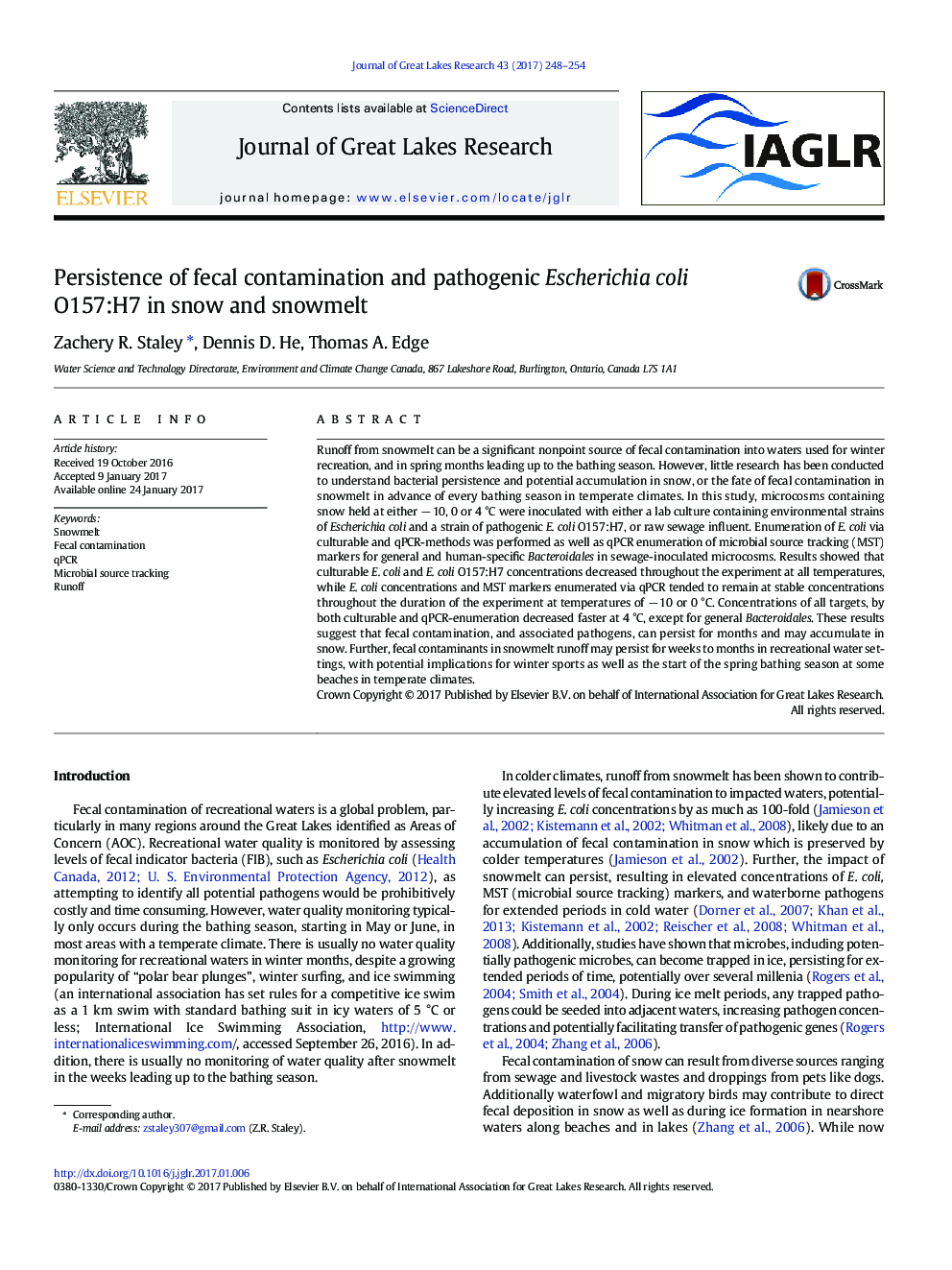| Article ID | Journal | Published Year | Pages | File Type |
|---|---|---|---|---|
| 5744722 | Journal of Great Lakes Research | 2017 | 7 Pages |
Abstract
Runoff from snowmelt can be a significant nonpoint source of fecal contamination into waters used for winter recreation, and in spring months leading up to the bathing season. However, little research has been conducted to understand bacterial persistence and potential accumulation in snow, or the fate of fecal contamination in snowmelt in advance of every bathing season in temperate climates. In this study, microcosms containing snow held at either â 10, 0 or 4 °C were inoculated with either a lab culture containing environmental strains of Escherichia coli and a strain of pathogenic E. coli O157:H7, or raw sewage influent. Enumeration of E. coli via culturable and qPCR-methods was performed as well as qPCR enumeration of microbial source tracking (MST) markers for general and human-specific Bacteroidales in sewage-inoculated microcosms. Results showed that culturable E. coli and E. coli O157:H7 concentrations decreased throughout the experiment at all temperatures, while E. coli concentrations and MST markers enumerated via qPCR tended to remain at stable concentrations throughout the duration of the experiment at temperatures of â 10 or 0 °C. Concentrations of all targets, by both culturable and qPCR-enumeration decreased faster at 4 °C, except for general Bacteroidales. These results suggest that fecal contamination, and associated pathogens, can persist for months and may accumulate in snow. Further, fecal contaminants in snowmelt runoff may persist for weeks to months in recreational water settings, with potential implications for winter sports as well as the start of the spring bathing season at some beaches in temperate climates.
Related Topics
Physical Sciences and Engineering
Earth and Planetary Sciences
Earth and Planetary Sciences (General)
Authors
Zachery R. Staley, Dennis D. He, Thomas A. Edge,
